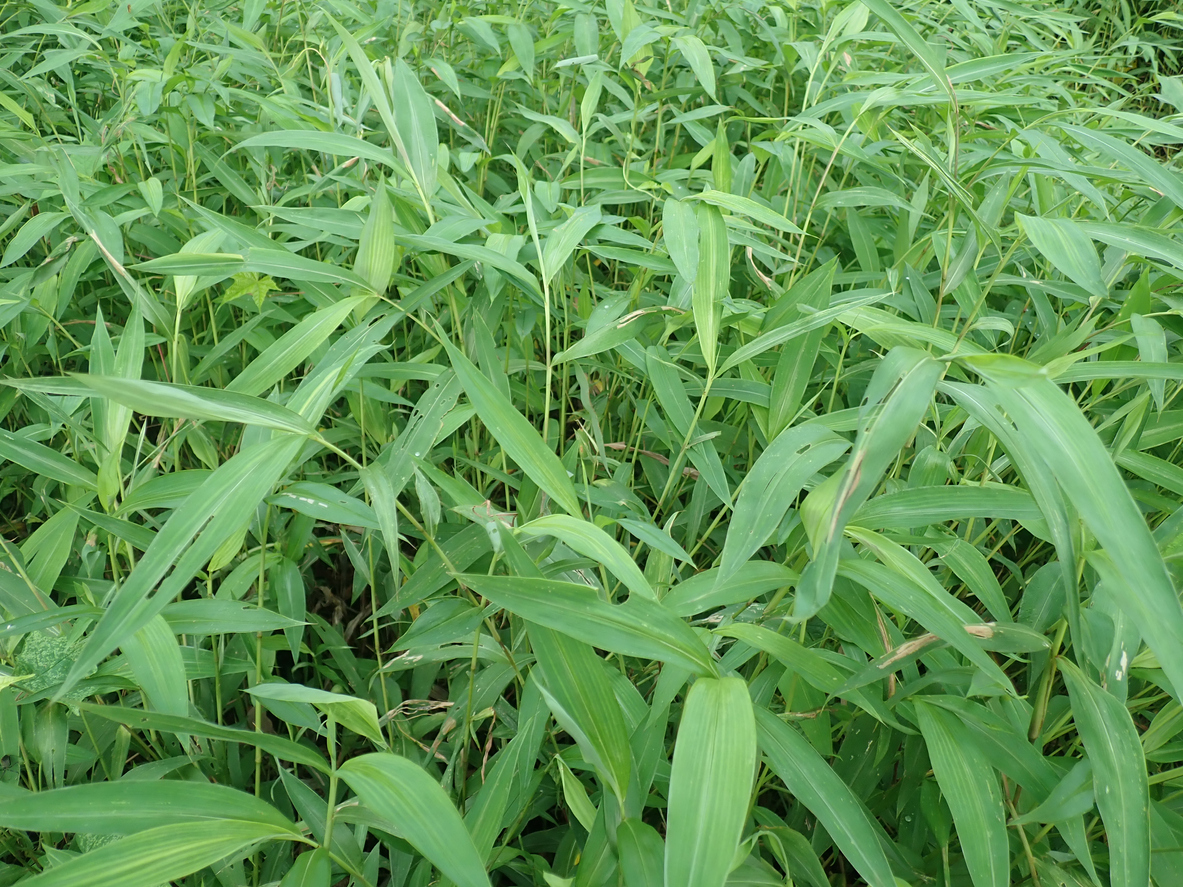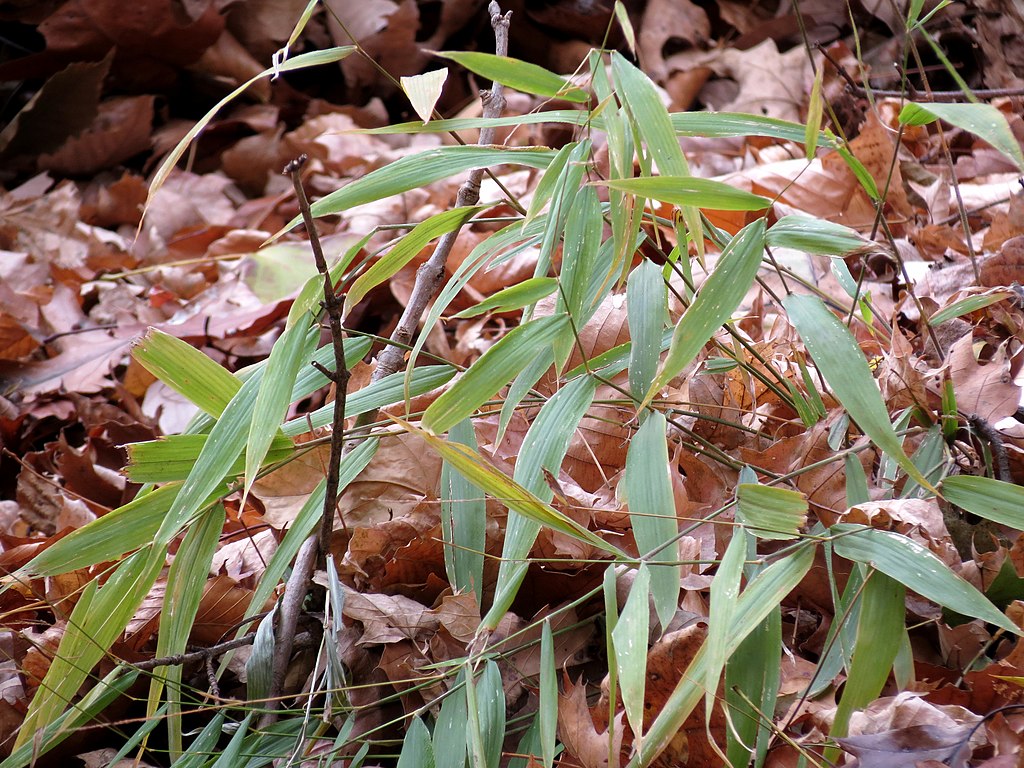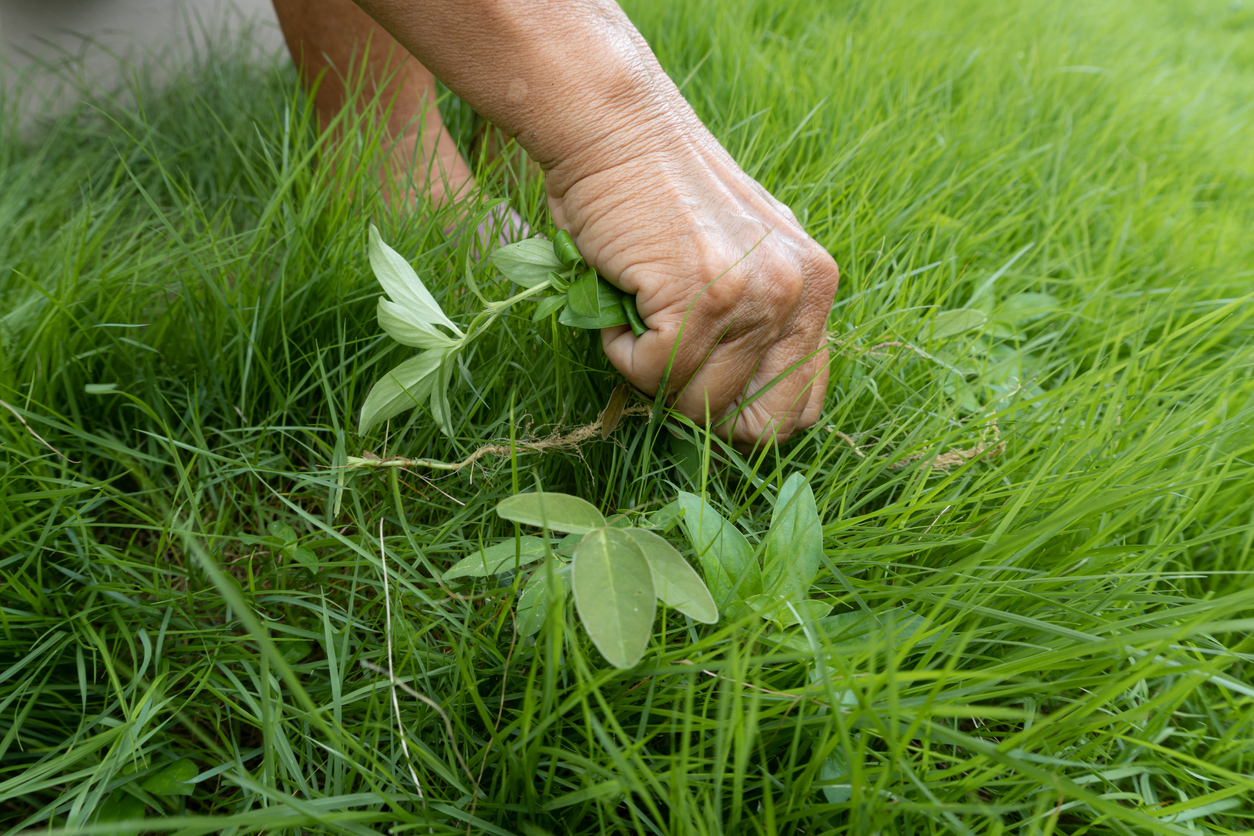

We may earn revenue from the products available on this page and participate in affiliate programs. Learn More ›
Presumed to have been introduced to the U.S. as porcelain packing material from overseas shipping, Japanese stiltgrass (Microstegium vimineum) has become one of the country’s most damaging invasive plant species.
Growing rapidly across the Eastern United States, Japanese stiltgrass has quietly been invading forest lands since its introduction to America in 1919. Getting rid of these weeds is tricky, as their seeds can remain active in the soil for up to 5 years. Read on to learn more about this grass plant that’s devastating ecosystems at an escalating pace.
RELATED: Homemade Weed Killers and Preventative Treatments That Really Work
What is Japanese stiltgrass?
The name Japanese stiltgrass gives a clue to its origin, since this plant species is native to Asian countries. You can easily identify this invasive grass plant, which is reminiscent of a thinner bamboo and grows up to a little more than 3 feet tall. Japanese stiltgrass bears long stems with narrow, pale green tapered leaves on both ends. In the summer, it creates delicate flower spikes at the top of its stems. Come fall, the plant starts to become slightly purplish.
The grass grows in large dense swaths, causing issues as it chokes out local ecosystems by smothering them. Soil disturbances from any number of causes, from heavy equipment operations to floods, give Japanese stiltgrass the opening it needs to take over an area.
Japanese stiltgrass can thrive in many different environments, seemingly preferring acidic to neutral, moist soils with high nitrogen content. The amount of light it needs seems irrelevant, as the plant grows in wide open fields and covered forests.
RELATED: 10 Tips for Pulling Weeds and Keeping Them Out of Your Yard
Where has Japanese stiltgrass spread?
In North America, Japanese stiltgrass has spread into parts of southern Ontario, Canada, and the Eastern half of the United States south and west to Texas. The University of Georgia provides distribution maps, where you can see which states have reported finding this invasive plant species.
The plant spreads quite easily. Japanese stiltgrass seeds can attach to clothing and animal fur and can contaminate any soil, bird seed, or even hay. Once the plant roots, it disperses itself quite efficiently. Japanese stiltgrass roots from stem nodes—roots grow from the nodes on the plant once it reaches the soil.
The seeds on the plant can live up to 3 to 5 years, waiting to grow once an area has been disturbed. Any disturbance of grassy areas with the seeds laying dormant can cause the growth of stiltgrass. Monitoring an area once stiltgrass has shown up is crucial, since it can pop up years after the seeds are introduced there.
RELATED: 5 Things to Do With Weeds After You Pull Them

Why is stiltgrass bad?
Due to its rapid growth and seed production, this plant can destroy local ecosystems by smothering out natural vegetation. Japanese stiltgrass aggressively pushes out native wildlife, disturbing bird nesting sites and other wildlife habitats due to the plant’s fast growth.
The dense growth of this invasive weed alters the balance of the ecosystem, potentially bringing it to ruin. Certain animals do not graze on this grass, preferring regional vegetation; instead, they will leave the area to find food sources they like. With fewer animals to control the plant as a byproduct of grazing, Japanese stiltgrass is free to keep growing without other plants or animals to compete with or control it.
RELATED: 13 Plants You Never Knew Were Weeds

What can homeowners do to control Japanese stiltgrass?
Homeowners can control the spread of Japanese stiltgrass by avoiding planting invasive plants in the garden and using high-quality certified seeds for their crops.
Avoid disturbing areas previously infested by Japanese stiltgrass (since doing so might awaken dormant seeds), and try to remove or limit the grass as early as possible. Remove the plant in late summer before it has a chance to seed, as the seed can spread the plant easily.
RELATED: Keep, Don’t Kill: 9 Weeds to Welcome
In the early stages, the roots are shallow and easy to remove. Mowing can remove some of the Japanese stiltgrass growth if done consistently before it has a chance to go to seed. For chemical removal in your gardening beds, the herbicide trifluralin (Preen Garden Weed Preventer or Treflan) can be used to prevent the seeds from germinating, as long as you follow the instructions on the label. In lawns, use the same pre-emergent chemicals that you use to combat crabgrass germination. Following species removal, continue monitoring the area for several years and immediately remove any rogue plants that appear.
